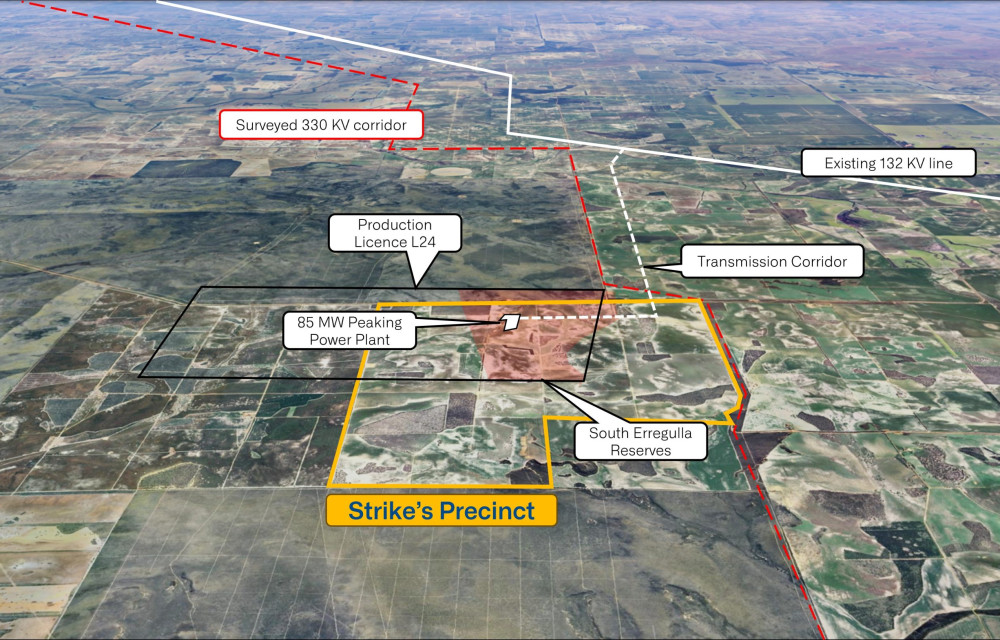Solar runs the gas, gas runs the grid, and Strike Energy runs the show in WA’s newest plug-and-play power play


, , , , , , , , , , , , , , ,
, ,
,
In a corner of Western Australia traditionally known for iron ore, a quiet transformation is underway in gas. But this isn’t just another upstream story — it’s about solar-powered processing, modular gas peaking, seismic rethinks, and basin-defining flow rates. It’s an infrastructure-light, METS-heavy playbook built by Strike Energy, and it’s changing how we think about gas in the energy transition.
Speaking at the RIU Sydney Resources Round-up 2025, acting CEO Jill Hoffmann outlined how Strike is combining firm gas supply with flexible infrastructure and integrated grid-ready power. “We’re now an integrated energy company,” Hoffmann said. “We produce gas today, and by October next year, we’ll be producing electricity”.
It’s a story of producing now, building fast, and drilling deeper — all while keeping control of the entire value chain.

Walyering: Where Solar Powers the Gas
Strike’s Walyering gas processing plant, located in the Perth Basin, is already online and delivering 25 TJ/day. What makes it unique is that the facility runs entirely on solar and battery storage — making it the first renewables-powered gas plant in Australia.
That alone changes the narrative: no diesel reliance, no third-party energy inputs, no long waits for grid connection. It’s modular, remote, and scalable.
Equipment and service requirements include:
-
Containerised solar PV arrays
-
Battery energy storage systems (BESS)
-
Gas dehydration and compression skids
-
Smart instrumentation and off-grid SCADA control
-
Modular process skids and emission-reduction systems
For suppliers, this is a blueprint for what low-footprint gas production looks like — off-grid, low emissions, and tech-enabled from the outset.
South Erregulla: Grid-Ready Gas Peaking, No Pipeline Required
South of Walyering, Strike is building the South Erregulla gas peaking power station, a vertically integrated project that’s unique in its execution. The company owns the gas, the land, the plant, and the electrons. There’s no third-party pipeline, no separate processing plant, and no take-or-pay contracts. It’s plug-and-play gas-to-power — and it’s set to go live in October 2026.
Thanks to WA’s capacity pricing mechanism, the plant will earn $18 million in year-one revenue before it even switches on.
METS opportunities include:
-
Gas turbine installation
-
Grid interconnection systems for the SWIS
-
Energy management software and demand response control
-
Civil, mechanical, and electrical balance-of-plant works
-
Long-term O&M contracts and reliability analytics
It’s fast-build, high-flex infrastructure — a model that could be repeated across the state.
West Erregulla: A Basin-Maker Gas Field Enters Development Mode
Strike’s original game-changer was the West Erregulla gas field (EP469), discovered in 2019 and co-owned with Warrego Energy (now under Hancock Prospecting). The field hit the headlines with West Erregulla-3, which recorded a peak flow of 90 MMscf/d — one of the best results in the Perth Basin to date.
Development momentum continues:
-
Commonwealth environmental approval received in late 2024
-
Workovers planned for West Erregulla-4 and -5
-
Joint venture with Warrego refining the field development plan
-
Gas Sales Option Agreement with CSBP in place for up to 100 PJ of gas, with pricing now tied to current market benchmarks
Meanwhile, Strike is shooting new 3D seismic over Erregulla Deep, where it holds a 2U prospective resource of 278 PJ (gross).
This field is production-ready and METS-aligned, with supply opportunities across:
-
Downhole tools for re-entry and workovers
-
Wellhead skids and artificial lift systems
-
Pipeline supply (if opted for)
-
High-capacity gas compression packages
-
Metering, custody transfer, and flow assurance systems
Ocean Hill and Kadathinni: The New Frontier for Drill-Ready Gas
Strike isn’t resting on proven ground. The company is bringing forward two exploration prospects with massive potential:
Ocean Hill (EP495)
-
A 256 km² 3D seismic program in 2024 revealed new amplitude-rich channels
-
The 1991 Ocean Hill-1 well missed the best targets — Strike now sees multiple sweet spots
-
Three-well appraisal campaign planned, with Ocean Hill-2 drill-ready by Q4 2025
Kadathinni (EP503)
-
A 484 km 2D seismic program lit up targets in the Kingia and Eneabba formations
-
Prospective gas resource of up to 1,184 PJ (3U)
-
Tathra-1 well in planning for 2026
Suppliers take note:
-
Seismic processing and amplitude interpretation
-
Directional drilling rigs and fluid systems
-
Formation evaluation and well logging
-
Flowback systems and test separators
-
Downhole pressure/temperature tools and sampling services
Both fields are designed for fast-to-market development, especially Ocean Hill, which lies just 4 km from the Dampier to Bunbury pipeline — a potential tie-in without major CapEx.
The Rock Wrangler View: What This Means for METS
Strike’s project suite is a live case study in how a mid-cap can:
-
Build modular gas processing and dispatch capacity
-
Leverage owned infrastructure for speed and margin
-
Deploy seismic + machine learning for smart drilling
-
Power gas plants with solar and batteries
-
Drive demand for equipment and services across drilling, power, automation, and grid integration
With multiple projects moving in parallel — production, construction, pre-FID development, and frontier exploration — this is a portfolio METS suppliers should be tracking.
